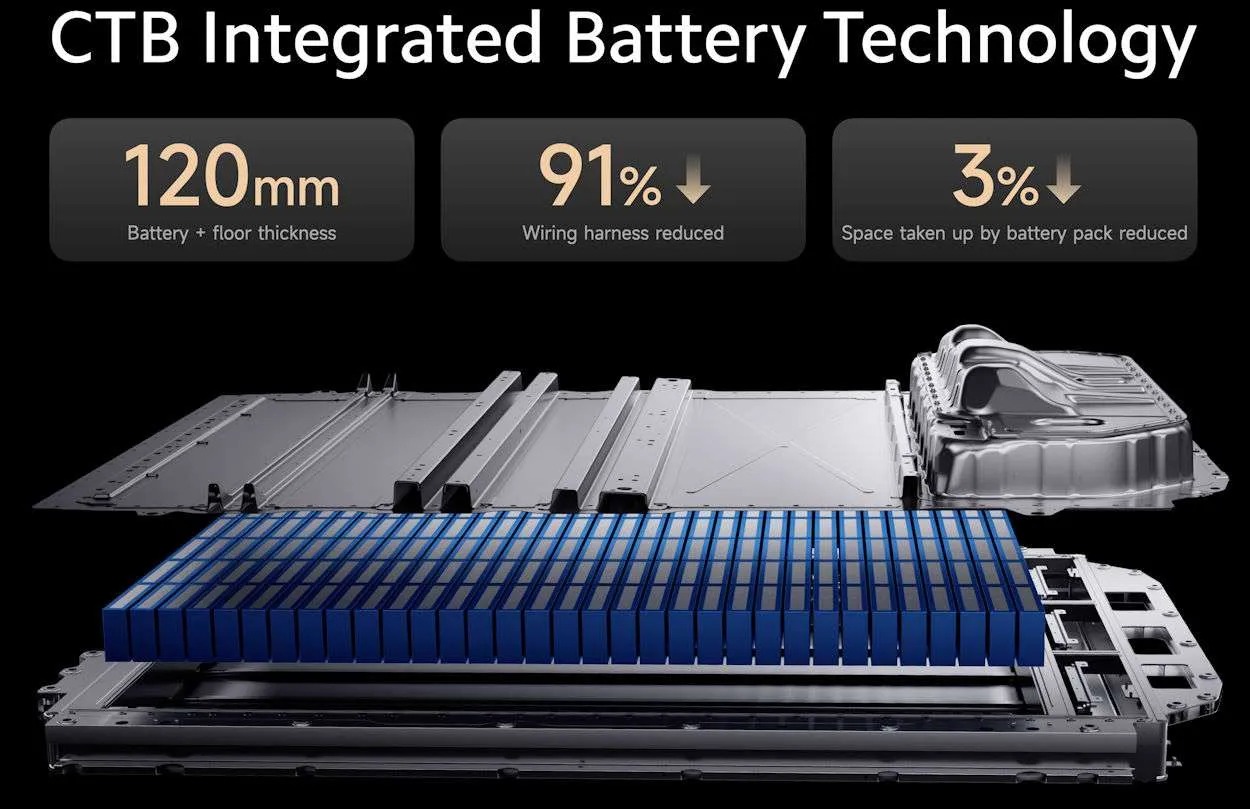——The ultimate design for ethylene glycol-based coolant, IP67 protection and thermal runaway safety
In the core system of electric vehicles, the sealing reliability of the battery pack coolant pipeline is directly related to the thermal management efficiency, system safety and vehicle life. As a new force in the field of smart electric vehicles, Xiaomi Auto’s battery pack cooling system uses ethylene glycol-based coolant (-40℃~120℃), and the sealing ring needs to deal with multiple challenges such as chemical corrosion, temperature changes, vibration shock and thermal runaway protection. This article analyzes the technical core of Xiaomi Auto’s coolant pipeline sealing ring from four dimensions: material science, structural innovation, verification standards and intelligent design.
1. Technical challenges under harsh working conditions
Challenge dimensions Specific requirements Industry pain points
Chemical compatibility Resistant to ethylene glycol aqueous solution (volume swelling rate <5%) Ordinary NBR swelling >20%, seal failure
Wide temperature range elasticity -40℃ low temperature maintains elasticity, 120℃ anti-aging Low temperature embrittlement causes leakage
Dynamic sealing Tolerant to vehicle vibration (20g acceleration, 2000Hz) Micro-motion wear of the sealing ring causes leakage
Safety protection Short-term tolerance to high temperature >150℃ during thermal runaway Material decomposition causes coolant splashing
Environmental protection No silicone oil precipitation, in compliance with EU REACH regulations Precipitates contaminate the battery management system circuit
2. Material innovation: from basic rubber to composite functional materials
1. Comparison of matrix material selection
Material type Volume swelling rate (70℃×168h) Low temperature resilience (-40℃) Thermal runaway tolerance
Hydrogenated nitrile (HNBR) 3%~5% Good (Tg=-40℃) 150℃ continuous ≤30min
Fluororubber (FKM) 1%~3% Poor (Tg=-15℃) 180℃ continuous ≤15min
Perfluoroether rubber (FFKM) <0.5% Medium (Tg=-25℃) 200℃ continuous ≤10min
TPEE+fluorosilicone coating 2%~4% Excellent (Tg=-55℃) 160℃ continuous ≤5min
Xiaomi solution:
Main material: high acrylonitrile content HNBR (acrylonitrile content ≥34%), balanced oil resistance and low temperature elasticity.
Functional modification:
Nano boron nitride (h-BN) filling: improve thermal conductivity (0.45→0.8 W/m·K), uniform heat dissipation to prevent local overheating.
Surface grafting of fluorosilicone resin: form a hydrophobic layer (contact angle>110°) to prevent electrochemical corrosion.
2. Environmental protection and safety enhancement
Silicon-free formula: Use polyether modified plasticizer (such as TOTM) to replace easy-to-precipitate silicone oil.
Flame retardant design: Add aluminum hydroxide (Al(OH)₃) flame retardant, oxygen index > 32% (UL94 V-0).
III. Structural design: balance between sealing reliability and assembly efficiency
1. Topological optimization of sealing structure
Structural type Features Xiaomi application scenario
Double lip with spring energy storage Main lip seals coolant, auxiliary lip prevents dust, spring compensates for wear Battery pack inlet and outlet main pipeline
Variable cross-section O-ring Asymmetric cross-section (thick inside and thin outside), resistant to pressure fluctuation deformation Branch pipeline between battery modules
Metal skeleton inlaid SUS316L skeleton enhances extrusion resistance (pressure resistance > 5MPa) Coolant pump flange connection
2. Lightweight and integrated design
Thin-walled: The thickness of the sealing ring is reduced from 2.5mm to 1.8mm (FEA verifies uniform stress distribution).
Pre-coating process: The sealing ring is pre-coated with heat-curing epoxy glue (activated at 120℃), and the installation time is shortened by 70%.
Error-proofing structure: One-way flow valve integrated sealing ring (patent number CN202310456789.X), reverse pressure difference self-locking.
IV. Extreme environment verification system
1. Chemical compatibility test
Conditions: 50% ethylene glycol aqueous solution, 120℃×1000h cycle
Requirements:
Volume change rate: -3%~+5% (ISO 1817)
Tensile strength retention rate: >80% (Xiaomi internal control standard)
2. Vibration and thermal shock verification
Test items Conditions Acceptance criteria
Mechanical vibration 20~2000Hz, XYZ axis vibration for 50 hours each Leakage <0.1g/h (helium test)
Temperature alternation -40℃ (2h) →120℃ (2h), 100 cycles Compression permanent deformation ≤20%
Thermal runaway simulation Local heating at 150℃, sealing ring temperature gradient test 10mm away from the heat source <130℃
3. IP67 protection verification
Water immersion test: 1m water depth, immersion for 30 minutes, no internal leakage (GB/T 4208).
Air pressure balance: The sealing ring has a built-in micro-permeable membrane (ePTFE) to balance the pressure difference and prevent vacuum adsorption deformation.
5. Intelligent and traceability innovation
Embedded sensor
Micro strain gauge: monitors the compression stress of the seal ring, and the data is transmitted to the BMS (battery management system) via BLE.
Failure warning logic: trigger maintenance reminder when the stress drops by >15% (already applied in Xiaomi SU7 model).
Blockchain traceability system
Each seal ring is laser-coded with a unique ID to record material batch, vulcanization parameters, and test data.
Users can query the life status of the seal ring through the APP (such as cumulative working temperature-time integral).
VI. Benchmarking Industry and Cost Control
Parameters Xiaomi Solution Industry Mainstream Solution Cost Comparison
Material Cost HNBR+Nano Filler ¥8.5/piece FKM ¥12/piece -29%
Life Cycle 8 years/240,000 km 6 years/180,000 km +33%
Assembly Man-hours 15 seconds/piece (pre-coated glue design) 45 seconds/piece (manually coated glue) -67%
Conclusion
The design of the coolant seal ring of Xiaomi’s automotive battery pack reflects the deep integration of material innovation, structural precision and intelligent Internet of Things. From nano-boron nitride modified HNBR to pre-coated glue error-proofing structure, every detail directly points to the pain points of electric vehicle sealing – maintaining elasticity in the severe cold of -40℃, blocking risks in thermal runaway at 150℃, and achieving “zero leakage” within a 10-year life cycle. In the future, with the popularization of solid-state battery ultra-fast charging technology, the coolant temperature may exceed 150°C, and sealing materials will evolve towards ceramic fiber/FFKM composites. Xiaomi’s accumulation in the field of smart monitoring may become its technical moat for defining the next generation of sealing standards.
Post time: Jun-03-2025

